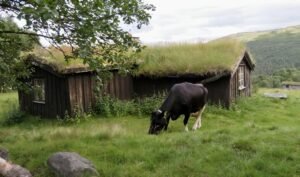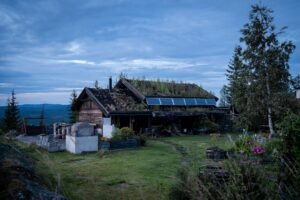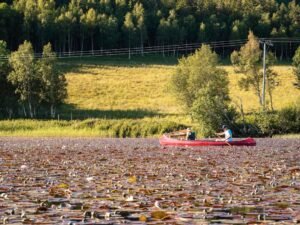

Norwegian Vocabulary for DIY and Home Improvement Projects
DIY (Do-It-Yourself) and home improvement projects have become increasingly popular in Norway in recent years. Many Norwegians enjoy the satisfaction of completing their own projects and making improvements to their homes. Whether it’s building a new piece of furniture, renovating a room, or tackling a larger construction project, the DIY culture in Norway is thriving.
Learning Norwegian vocabulary is essential for anyone interested in DIY and home improvement projects in Norway. Understanding the language is crucial for reading instructions, communicating with others, and navigating the local market for tools, materials, and supplies. By learning the basic vocabulary related to these projects, you can enhance your skills and confidence in undertaking DIY projects in Norway.
Table of Contents
ToggleBasic Norwegian Vocabulary for DIY and Home Improvement Projects
To get started with DIY and home improvement projects in Norway, it’s important to familiarize yourself with some basic Norwegian words and phrases. Here are a few examples:
– Hammer (Hammer) – Used for driving nails or removing them.
– Skrutrekker (Screwdriver) – Used for tightening or loosening screws.
– Sag (Saw) – Used for cutting wood or other materials.
– Målebånd (Measuring tape) – Used for measuring distances.
– Skrutvinge (Clamp) – Used for holding materials together.
– Skrutrekker med bits (Screwdriver with bits) – Used for different types of screws.
– Spiker (Nail) – Used for fastening materials together.
– Skrue (Screw) – Used for fastening materials together.
– Lim (Glue) – Used for bonding materials together.
– Verktøykasse (Toolbox) – A container for storing tools.
Tools and Equipment in Norwegian
In addition to the basic vocabulary mentioned above, it’s important to learn the names of specific tools and equipment used in DIY and home improvement projects. Here are a few examples:
– Boremaskin (Drill) – Used for drilling holes in various materials.
– Sag (Saw) – Used for cutting wood or other materials.
– Skrutrekker (Screwdriver) – Used for tightening or loosening screws.
– Høvel (Plane) – Used for smoothing and shaping wood.
– Vater (Level) – Used for determining if a surface is horizontal or vertical.
– Treskjærerjern (Chisel) – Used for carving and shaping wood.
– Spikerpistol (Nail gun) – Used for quickly driving nails into materials.
– Stikksag (Jigsaw) – Used for cutting curves and irregular shapes in wood or other materials.
Common Materials and Supplies in Norwegian
When undertaking DIY and home improvement projects, it’s important to know the names of common materials and supplies used. Here are a few examples:
– Tre (Wood) – Used for building structures, furniture, and other items.
– Maling (Paint) – Used for adding color to surfaces.
– Skruer (Screws) – Used for fastening materials together.
– Spiker (Nails) – Used for fastening materials together.
– Lim (Glue) – Used for bonding materials together.
– Gipsplater (Drywall) – Used for constructing walls and ceilings.
– Fliser (Tiles) – Used for covering floors, walls, or other surfaces.
– Isolasjon (Insulation) – Used for thermal or acoustic insulation.
– Verktøy (Tools) – Various tools used in DIY projects.
Measuring and Cutting in Norwegian
Accurate measuring and cutting are essential skills in DIY and home improvement projects. Here are some vocabulary words related to measuring and cutting:
– Målebånd (Measuring tape) – Used for measuring distances.
– Linjal (Ruler) – Used for measuring and drawing straight lines.
– Sag (Saw) – Used for cutting wood or other materials.
– Blyant (Pencil) – Used for marking measurements or drawing lines.
– Skjære (Cut) – The action of cutting.
– Klippe (Snip) – The action of cutting with scissors or shears.
– Kapp (Miter) – A cut made at an angle other than 90 degrees.
Electrical and Plumbing Terms in Norwegian
When working on DIY and home improvement projects that involve electrical or plumbing systems, it’s important to know the relevant vocabulary. Here are some examples:
– Strøm (Electricity) – The flow of electrical power.
– Sikring (Fuse) – A device that protects electrical circuits from overloading.
– Stikkontakt (Outlet) – A device for connecting electrical devices to a power source.
– Lysbryter (Light switch) – A device for turning lights on and off.
– Rør (Pipe) – A tube used for conveying fluids or gases.
– Vannkran (Faucet) – A device for controlling the flow of water from a pipe.
Building and Construction Vocabulary in Norwegian
For larger DIY projects involving building and construction, it’s important to learn the relevant vocabulary. Here are some examples:
– Bygning (Building) – A structure used for shelter or other purposes.
– Fundament (Foundation) – The base on which a building or structure is built.
– Vegg (Wall) – A vertical structure that divides or encloses a space.
– Tak (Roof) – The upper covering of a building that protects it from the weather.
– Gulv (Floor) – The lower surface of a room on which one walks.
– Trapp (Stairs) – A series of steps leading from one level to another.
Decorating and Painting Terms in Norwegian
When it comes to decorating and painting projects, it’s important to know the relevant vocabulary. Here are some examples:
– Maling (Paint) – A colored substance used for adding color to surfaces.
– Pensel (Brush) – A tool used for applying paint or other substances.
– Rulle (Roller) – A cylindrical tool used for applying paint or other substances.
– Tapet (Wallpaper) – A decorative paper used for covering walls.
– Farge (Color) – The visual perception of different wavelengths of light.
Safety Precautions and Emergency Phrases in Norwegian
Safety should always be a top priority when undertaking DIY and home improvement projects. Here are some vocabulary words related to safety precautions and emergency situations:
– Sikkerhet (Safety) – The state of being free from harm or danger.
– Vernebriller (Safety goggles) – Protective eyewear used to protect the eyes from hazards.
– Hansker (Gloves) – Protective hand coverings.
– Brannslukningsapparat (Fire extinguisher) – A device used to extinguish small fires.
– Førstehjelpsskrin (First aid kit) – A collection of supplies and equipment used for giving medical treatment.
Norwegian Classes and Language Schools for DIY and Home Improvement Vocabulary
If you’re interested in learning Norwegian vocabulary specifically related to DIY and home improvement projects, there are language classes and language schools that cater to these needs. These classes often focus on teaching the vocabulary and phrases necessary for understanding instructions, communicating with others, and navigating the local market for tools, materials, and supplies.
Taking these classes can greatly enhance your skills and confidence in undertaking DIY projects in Norway. They provide a structured learning environment where you can practice speaking and listening to Norwegian in a context that is relevant to your interests. Additionally, these classes often provide resources and materials that can further support your learning journey.
In conclusion, learning Norwegian vocabulary for DIY and home improvement projects is essential for anyone interested in undertaking these projects in Norway. By familiarizing yourself with the basic vocabulary, tools, materials, and safety precautions, you can enhance your skills and confidence in completing DIY projects. Whether you’re building furniture, renovating a room, or tackling a larger construction project, understanding the language will greatly contribute to your success. So, don’t hesitate to continue learning and practicing Norwegian in these contexts.
If you’re interested in learning Norwegian vocabulary for DIY and home improvement projects, you might also find this article on “Navigating Norwegian Work Culture: Essential Norwegian Phrases for the Workplace” helpful. It provides essential phrases and vocabulary for communicating effectively in a professional setting. Check it out here.
FAQs
What is the article about?
The article is about Norwegian vocabulary related to DIY and home improvement projects.
Why is it important to learn Norwegian vocabulary for DIY and home improvement projects?
Learning Norwegian vocabulary for DIY and home improvement projects can be helpful for those who live in Norway or plan to do DIY projects in Norwegian-speaking countries. It can also help in communicating with Norwegian-speaking professionals in the field.
What are some common Norwegian words related to DIY and home improvement?
Some common Norwegian words related to DIY and home improvement include “verktøy” (tools), “maling” (paint), “skruer” (screws), “spiker” (nails), “sag” (saw), “hammer” (hammer), “skrutrekker” (screwdriver), “boremaskin” (drill), “lim” (glue), and “trelast” (lumber).
Are there any resources available for learning Norwegian vocabulary for DIY and home improvement projects?
Yes, there are several resources available online for learning Norwegian vocabulary related to DIY and home improvement projects. Some popular resources include online dictionaries, language learning apps, and language exchange websites.
Can learning Norwegian vocabulary for DIY and home improvement projects be helpful for beginners?
Yes, learning Norwegian vocabulary for DIY and home improvement projects can be helpful for beginners who are interested in learning the language. It can also be a fun and practical way to practice and improve language skills.
If you want to learn Norwegian, you can register for classes here. We look forward to hearing from you and helping you become fluent in Norwegian.





